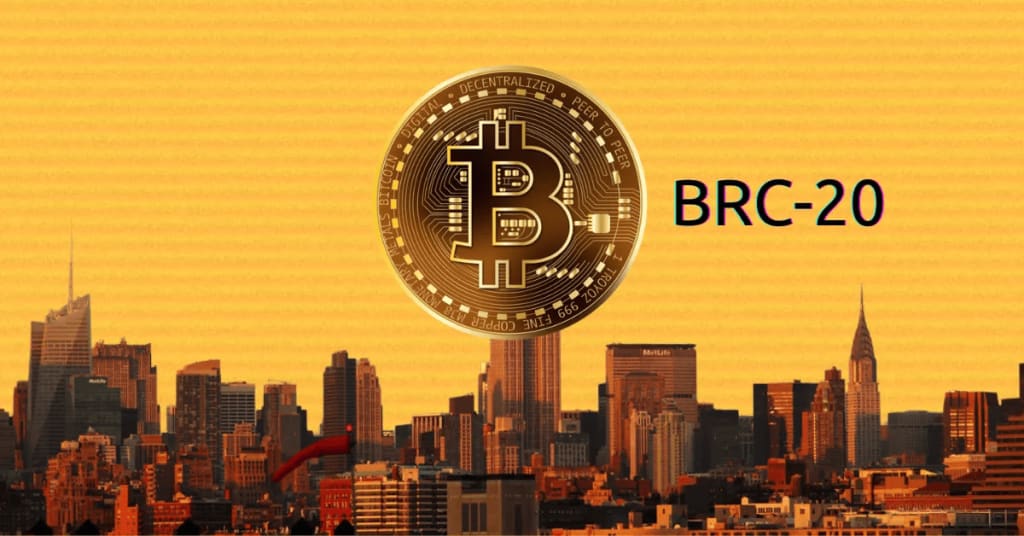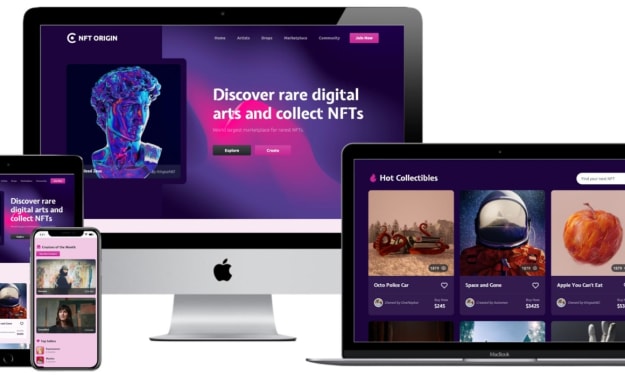Why BRC-20 Token Development is the Next Big Thing in Crypto?
Bitcoin’s BRC-20 token standard has gained significant traction in recent months, with a flurry of meme coins emerging on the Bitcoin blockchain.

Bitcoin has been leading the cryptocurrency world since its inception in 2009, but its limited feature set and lack of smart contract support have made it challenging for developers to create new use cases. However, the rise of BRC-20 tokens on the Bitcoin blockchain has sparked a new trend in the crypto community. In this article, we will explore BRC-20 tokens, their key differences from ERC-20, and the explosive growth of BRC-20 transactions and mints.
Demystifying BRC-20 Tokens: Functionality and Benefits Explained
BRC-20 tokens are an experimental token standard for the Bitcoin blockchain that enables developers to create and transfer fungible tokens using the Ordinals protocol. It deploys token contracts, mints tokens, and transfers tokens using Ordinal inscriptions of JSON data. Unlike EVM chains, this is not a token standard in the sense that smart contracts manage the token standard and its various rules. Rather, it is a method of storing a script file in Bitcoin and using that file to attribute tokens to satoshis and then allowing them to move from one user to another.
On March 8th, 2023, Twitter user @domodata developed the BRC-20 token. The name is a play on Ethereum’s ERC-20 token standard, however, they do not interact with smart contracts like the EVM standard from which it derives its name.
A Look at Meme Coins on BRC-20 & Let's Understand Why it is so Hyped
BRC-20 tokens have been hyped because of their sudden rise in market value. For now, the majority of BRC-20 tokens are meme coins like “ordi,” “Pepe,” and “meme.” The original BRC-20 token contract for the “ordi” token has a hard cap of 1,000 tokens each mint and a total maximum supply of 21 million tokens.
Over 14,000 different tokens have been minted so far, with a total market cap of over $1 Billion, up 600% in the last week. The creator of the protocol originally stated that these tokens would be worthless, but “ordi” reached $4 per unit, providing astronomical returns to early minters.
On May 1, BRC-20 tokens had a volume of 366,000 transactions, while the total number of transactions on the network was 2.36 million. As the demand for BRC-20 tokens continues to climb, so are transaction costs as a result of the increased token activity. With the increased hype of the BRC-20 tokens, the BTC chain is congested.
Battle of the Tokens: Analyzing the Differences between BRC-20 and ERC-20
BRC-20 tokens have some significant differences from Ethereum’s ERC-20. The most significant difference is that BRC-20 tokens are issued on the Bitcoin blockchain, which is secured by PoW, whereas ERC-20 tokens are issued on the Ethereum blockchain, which is secured by Proof-of-Stake (PoS). Additionally, BRC-20 tokens have fewer features than ERC-20 tokens due to the lack of smart contract support on Bitcoin.
BRC-20 Token Development: A Revolutionary Innovation
BRC-20 token development is the latest breakthrough in the Bitcoin ecosystem, allowing users to create fungible tokens on the Bitcoin blockchain other than BTC. This innovation, which was introduced in March 2023, is considered an experiment by many in the industry.
The acronym BRC-20 stands for Bitcoin Request Comment – 20, and it was inspired by Ethereum’s ERC-20 token standard. BRC-20 tokens are minted using the Ordinals protocol, which allows for random data to be entered into Satoshis, the smallest units of BTC. It is worth noting that these tokens exist on-chain, unlike other networks such as Ethereum that use off-chain decentralized storage systems like IPFS to store data.
Creating a BRC-20 token is a relatively simple process. Users must first create a data object that includes information such as the token name, symbol, decimals, total supply, and initial value, which will be inscribed on the blockchain. They can then encode this object in an Ordinal address and send it to themselves via a Bitcoin transaction, resulting in the token being minted.
To transact BRC-20 tokens, a data object must be created with information such as the sender and receiver addresses, as well as the number of tokens to be sent. This object is then encoded in an Ordinal address and sent to itself, resulting in a successful token transfer.
Is BRC-20 Really Secure? Debunking Myths and Uncovering Truths
The novelty of BRC-20 tokens lies partly in their perceived security on the Bitcoin blockchain. Communities form around tokens with shared incentives, and everyone has a fair shot at minting. However, BRC-20 tooling is still primitive, and wallets like Unisat have experienced exploits, showcasing the technological risks currently associated with these tokens.
BRC-20 Tokens: Navigating the Risks and Enhancing Security Measures
Despite the explosive growth of BRC-20 transactions and mints, there are potential risks and flaws associated with this new trend. Memecoins are already risky, and meme coins on BRC-20 are even riskier. The technical flaws of BRC-20 tooling and the meme-centric nature of these tokens make them highly volatile and speculative. Additionally, the explosive growth of BRC-20 transactions could overload the Bitcoin network and cause issues.
Despite these risks, the explosive growth of BRC-20 transactions and mints shows that there is significant interest in this experimental token standard. The novelty of the perceived security of BRC-20 tokens on the Bitcoin blockchain, combined with the ability for anyone to mint tokens, has created a new playground for degens looking for the next big thing in cryptocurrency.
However, as with any emerging trend in the cryptocurrency space, caution should be exercised when considering investing in BRC-20 tokens or meme coins. It is important to thoroughly research any investment opportunity and understand the associated risks before making any decisions.
In conclusion, BRC-20 tokens and the rise of meme coins on the Bitcoin blockchain are a hot topic in the crypto community. While these tokens have some key differences from Ethereum’s ERC-20, they have managed to capture significant attention due to their perceived security on the Bitcoin blockchain and the explosive growth of BRC-20 transactions and mints. However, caution should be exercised when considering investing in these tokens, as they are highly speculative and inherently risky.






Comments
There are no comments for this story
Be the first to respond and start the conversation.